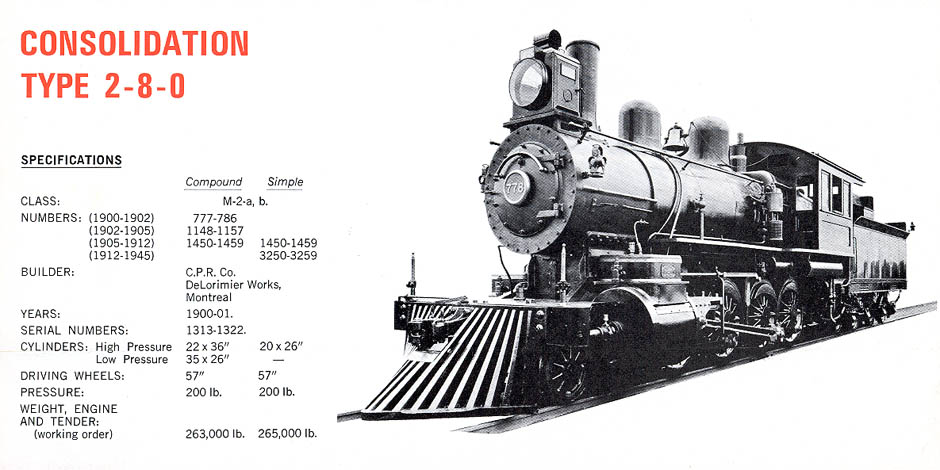Collectors' Item 12
by Omer Lavallee
In a previous installment,
reference was made to the compound system of steam distribution in which steam produced by
the boiler was used twice - once at boiler pressure and once at lower pressure. Compounding
was popular around the turn of the century and several basic systems - peculiar to
individual locomotive manufacturers - were in use.
One of them, the Richmond or cross-compound system, was
particularly adaptable to freight
|
locomotives such as No. 778 which forms
our subject this month. In the Richmond system, the high-pressure cylinder was
placed on the right hand side of the locomotive, with the low-pressure
cylinder in corresponding place on the opposite side. The illustration above shows this
arrangement clearly, the much larger low-pressure cylinder, with an inside
diameter of 35 inches, appearing prominently in the foreground. The diameter of the
high-pressure cylinder was only 22 inches, both, of course, had the same
stroke: 26 inches. This locomotive, built at Delorimier Shops in Montreal in 1900,
had other characteristics of its
|
era, from its long and graceful wooden
pilot, and its oil headlight and classification lamps, to its square-topped
Belpaire firebox. It and several hundred sisters of the same type were the heavy freight
locomotives of their day, unchallenged until the appearance of the first 2-8-2
type engines in 1912. Heavier versions of the 2-8-0 type were used regularly in
service up to less than ten years ago, though they were provided with simple steam
distribution, compounding having become obsolete with the evolution of
superheating.
|
